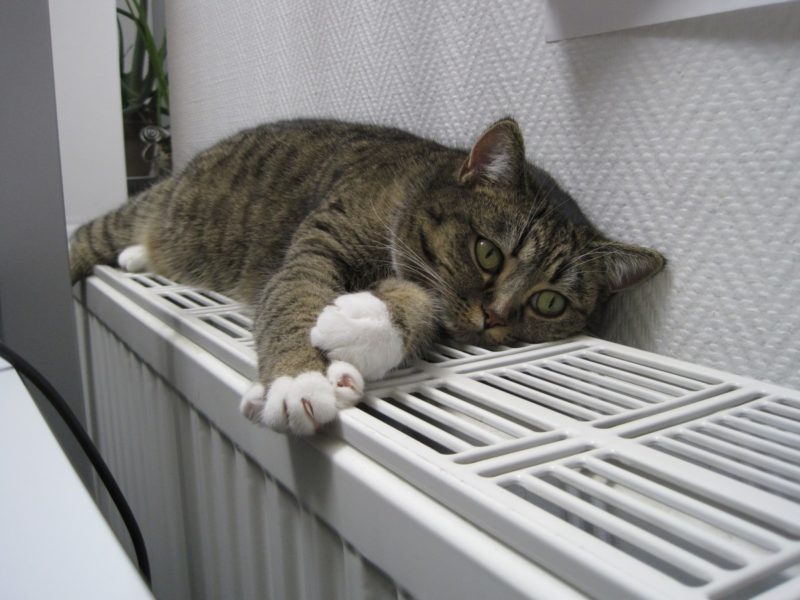Do you want to know what is a power vented water heater? Don’t worry, and you have arrived at the right place. A horizontally vented power vent water heater exhausts through a horizontal channel that runs outside your property. An additional fan/blower pushes all exhaust air via this pipe.
A blower requires extra electricity, which is different first from energy used to run the water heater.
The Power vent water heaters, which feature created blowers that force the flue gases out of the vent through with a motorized fan, have fast now become a norm for newly built houses. Power vent heaters are nearly hard to backdraft due to their unique design. With such a power vent heater installed, the water heater’s likelihood of carbon monoxide problems is considerably reduced. If you want to learn more, just continue to read.
What A Power Vented Water Heater Is?
There are numerous benefits to having a power vent heater, but perhaps the most significant is the freedom to put the heater virtually anyplace. A power vent heater may evacuate gases through a horizontally vent because these heaters do not necessitate vertical venting. The horizontal vent could be the only choice in some instances. Furthermore, many homeowners just utilize these heaters to increase exhaust clearance and appreciate the complete peace of mind with the extra layer of protection.
Because a power vent water heater reduces the possibility of backdraft, the danger of carbon monoxide is considerably reduced, albeit not entirely removed. The additional advantage is the energy-efficient. Because power vent heaters are much more energy-saving, they use much less gas. Lowering your energy use would save you cash, but likely not any more over $30 annually, so consider it a bonus rather than a determining factor.
Most contemporary houses are constructed with high energy accuracy and efficiency, often ignored. It might be hard to provide sufficient spontaneous airflow for venting since they are “firmly constructed.” In this case, a power vent heater might be an intelligent choice. If you are thinking of a power vented heater, this article will help you understand what is a power vented water heater.
Disadvantages Of Power Vented Heaters
Anything, regrettably, has flaws, and a power vent heater will be no exception. To start with, these are pretty loud. Although they do not look like a Freight train, you can detect the fan operating. If the heater is put in an underground or other out-of-the-way position, it’s not usually a problem, but if it’s near a living space, you’ll very likely notice if it is on. Another drawback would be that the fan must be hooked into an electrical socket. No concern if you have a nearby power outlet; if not, you’ll need to build one.
Several homes choose gas water heaters because they can work even if there is a power failure. Using power vent heaters, this is not the case. The water heater will shut down whenever your electricity goes out since it won’t be willing to release its pollutants. Furthermore, power vent heaters are much more expensive, costing approximately 50 percent more direct vent heaters, and have a lesser guarantee. A 7-year warranty will be regarded as top of the list for most circumstances.
Can Regular Water Heaters Be Converted To Power Vent Water Heaters?
Even though it is theoretically conceivable, we strongly advise against installing an average heater to a power vent system. Attempting to persuade a conventional heater would entirely break the water heater’s guarantee. Furthermore, it may violate your house guarantee, or if you have a significant problem, this could cause an insurance company to be denied.
Many quality companies, including Rheem production and Smith, produce power vent heaters. Rather than trying a retrofit, it’d be in the most significant advantage to buy a heater intended for this form of venting. Changing how a heater vents its emissions forces it to work in a way it wasn’t meant to. It was not a do-it-yourself activity, so if you’re still thinking about replacing your heater, talk to a skilled water heater installation about your alternatives. This is not likely to jeopardize the family’s safety to save a few bucks. Know how to vent a water heater.
Most Reliable Power Vented Water Heater
The 50-gallon A.O. Smith (GPVL-50) Power Vent gas heater is a great option. With just a Smith heater, you can’t go wrong, and so this heater has none of that. It improves energy effectiveness with the best electronic gas management, The Dynaclean 2 dipping tube, and 2 inches wide ecologically friendly insulator. Its multi-position rotating blower here on GPVL-50 is a distinctive tool that allows you a lot of freedom. Rheem’s G50-42N 50-gallon power vent heater does have an efficiency rating of 0.67 or first hourly rating of up to 85 gallons, which is a good result for just a tank that holds Fifty gallons.
It has a minimal Knox structure, environmentally efficient combustion, and electronic gas management. Whether you’re looking for a fifty-gallon water heater, Rheem heaters are a well-known, premium brand, and this is a good option.
It’s A Wrap!
We are glad to know you have learned what is a power vented water heater. Power vented water heaters are very reliable in some cases. Not many people recommend them due to their horrible sound. Still, it serves you better with hot water in winters to fulfill the house needs. Thank you, friends, for sticking with us!
It may also be a good idea to read about how to make a solar water heater and why does my hot water heater keep tripping.

